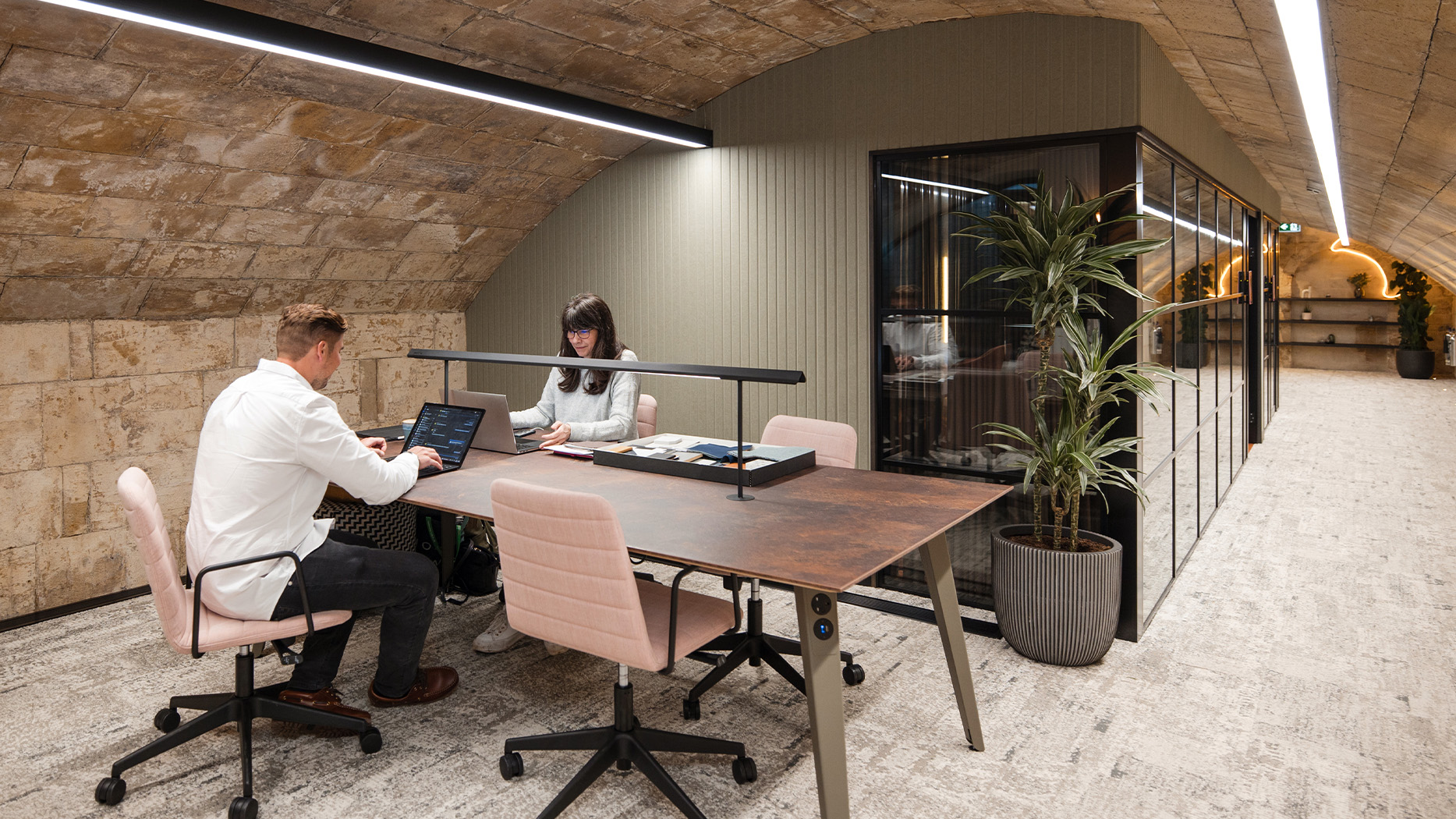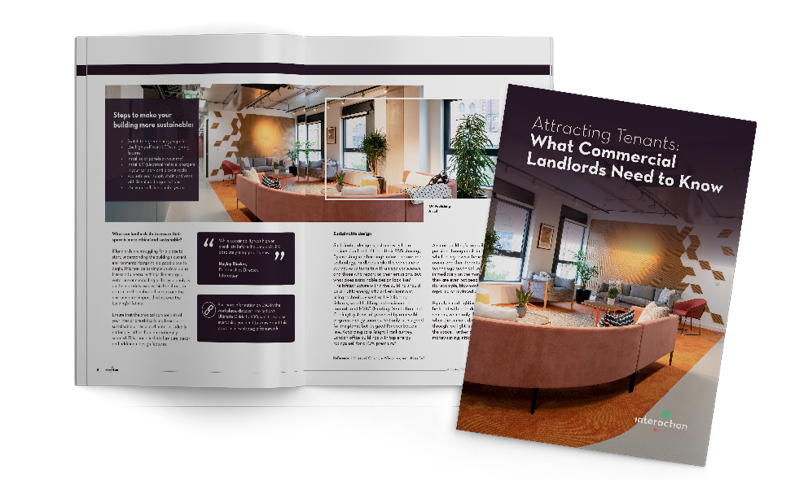Interaction’s Ultimate Guide to Workplace Ergonomics [PDF Download]

Ergonomics plays a crucial role in making an office design employee-centric. It’s essential for the wellbeing of your team and should be a top consideration for any people-focused organisation.
After the pandemic, work-from-home and office culture has dramatically changed the way people conduct their work, for better or for worse. How people interact with their workspace is fundamental to their health, work satisfaction, and productivity. For example, research has shown that poorly designed home-office setups and impromptu workspaces like couches have increased musculoskeletal problems.
Our mission with this guide is to help you improve ergonomic office design and general employee wellbeing – to find out more please read the summary below before downloading our free PDF.
What is ergonomics and where does the term originate?
There are a few definitions of ergonomics, but in a nutshell, it is the marriage of objects, workspaces, and systems with human wellbeing. Ergonomics as a concept can really be traced back to the dawn of human civilization – for as long as we have interacted with tools and shaped them to our benefit. However, it was only formalised as a discipline during World War 2 as designs became more complex. Then in the 1970s and 80s, it became more prominent with the rise of personal computers.
What are the aims of workplace ergonomics?
In general, ergonomics aims to enhance both the efficacy and efficiency of an interaction. The idea is to remove any obstacles or bad practices that could hamper a process or harm a person. A basic example would be a standing desk as opposed to a generic, hard chair and low desk, or a computer monitor that needs to be at eye-level.
Common misconceptions about ergonomics
Many people believe ergonomics is simply the “obvious” solution, or common sense, which could not be further from the truth. Ergonomics should be intuitive, yes, but this doesn’t always simply mean basic. Take the invention and development of the computer mouse for example – it took years of design, testing, and research to get it to feel just right, and wasn’t the first thing to come to mind when considering interaction with a screen.
It is also often thought that ergonomics is expensive, only for office workers, and takes maximum effort to incorporate into a space. Again, the modern history of ergonomics shows otherwise.
What are some of the benefits of ergonomic workplace design?
There are almost no downsides to ergonomics, and the benefits carry over to many aspects of life. Firstly, it is crucial for workplace risk assessment and compliance with regulations like DSE assessments, which are the basis for a safe, healthy, and productive work environment.
Better ergonomics also means happier people, fewer injuries, and higher productivity. When people don’t have to worry about their health being compromised and when their interactions flow more freely, they are more engaged with each other and their work.
Happier and healthier employees also mean less absenteeism, as they will have fewer injuries, be more motivated, and hopefully be inspired to spend more time in an ergonomic space.
How can ergonomic design be implemented in the workplace?
The first thing that comes to many people’s minds regarding ergonomics is the equipment used. While this is certainly true, it’s not the only way to implement it. Ergonomics is also about processes, systems, and spatial flow – or to put it another way, physical, cognitive, and organisational.
A great place to start, however, is indeed the proper setup of workstations; ergonomic chairs that have proper support, mice and keyboards that allow ease of work, and desks that are appropriately spaced and sized. Then there is also lighting, arrangement of furniture, and even proper ventilation.
Beyond that, personal actions go a long way, such as practising good posture, taking regular breaks, not staring at screens too long, and healthy social interaction.
Investing in ergonomic design isn’t just about complying with regulations; it’s about demonstrating a commitment to employee wellbeing. A comfortable and supportive work environment fosters happier, healthier, and more productive teams, ultimately benefiting the entire organisation.
What Else Is Included In Our Guide?
- What ergonomics is and why it matters
- The benefits of ergonomics
- The impact of poorly designed home working environments
- How ergonomics can help with risk assessment and hazards
- What ergonomic assessments are and why they’re important
- How ergonomics can improve employee happiness and productivity
- Tips for practising ergonomics at work
- Ergonomic products to help you get started.
Download our guide now and take the first step towards creating a comfortable and productive workplace for your employees. Fill in the form below or if you prefer, discuss any of these issues in person, chat with Charlie to learn more about our expert office design and build services.
Download now
Once you’ve filled in the form, we’ll send you the guide. Having problems? Contact us here.


